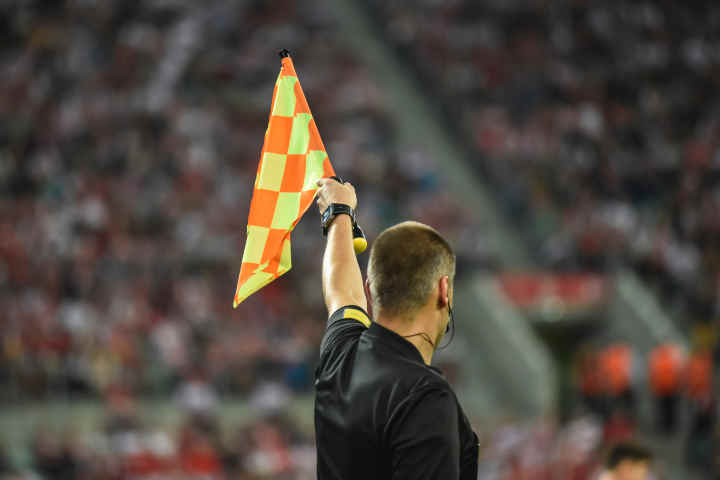Bet Types Explained – Understand Different Betting Options

13 minutes
Last Updated: May 31, 2022
When you’re looking to learn more about the different bet types you can explore as a beginner sports bettor, every bit of information can come in handy.
In our effort to make sure you find all of the betting options you need in one place, we’ve drafted the most comprehensive guide on the different types of bets you’ll come across when betting on various sports.
Complete with detailed examples and helpful tips, this page covers everything you need to know to be a prolific and successful sports bettor.
A Closer Look at the Different Types of Bets
There are many types of bets you can take advantage of when betting online and in land-based betting shops.
Moreover, the availability and selection of the betting options can also significantly vary depending on the country you live in.
With that in mind, here’s a closer look at the different bet types, complete with thorough and helpful examples.

Win Bets / Moneyline Bets
If you’re a beginner sports bettor, you should start with win/moneyline bets. This is because these bets are by far the simplest ones you can place when betting on sports.
The term “win bets” is a more accepted name, but these are also known as moneyline bets in North America. They are sometimes referred to as straight bets as well.
Win bets are easy to understand. You just place a bet on who you think is going to win a game or event. If they win, you get the payout. If they don’t, you lose the bet. This principle stretches across all sports. Let’s look at a few examples.
For instance, it’s the final of Roland Garros, and Nadal is playing Djokovic. The odds are 1.85 to 2.20 in Nadal’s favor.
This means that if you bet $100 on Nadal, you’d win $185 for a profit of $85, and if you bet on Djokovic, you’d win $220 for a profit of $120 plus your initial wager.
Moneyline bets are a bit more challenging to understand as they don’t use the same decimal odds format as win bets.
Still, once you get the hang of them, you’ll know how to assess your chances at first glance.
For example, if a game between two teams has decimal odds of 3.60 vs. 1.33, this would translate to +260 vs. -300 in a moneyline format.
While the format is different, you get a profit of $260 on the underdog and $33 on the favorite if you put in $100 in both odds formats.
It’s worth remembering that in the moneyline odds format, the favorite will always have the minus prefix and the underdog a plus prefix.
Over/Under Bets and Totals
Over/under bets and totals refer to the same type of bet, and the two terms are interchangeable in most countries.
The basic principle of over/under bet types is that the sportsbook will determine the expected number of points or goals. You then get to choose whether the total will be over or under the predicted number they presented you with.
Over/under bets are simple, fun, and available in plenty of sports. Let’s go over a few common examples of an over/under bet in different sports.
In football, you want to make an over/under game on a big Manchester City vs. Manchester United derby. You place the bet on under 2.5 goals. This means that the total number of goals in the match should be under two goals for you to win the bet.
Another option could be that you’re betting on a basketball game between Los Angeles and Brooklyn, and the over/under is 210.5 points.
You decide to bet on the over, so you need the combined number of points to be at least 211 for you to win. If it’s 210, the number is under, and you lose the bet.
Handicap Betting

Handicap betting works by adding goals or points to a team or player to create a bet. However, the goal isn’t to make the two sides appear equal. Instead, it just adds another bet element besides traditional win bets.
The added handicap gives the weaker side the opportunity of “winning”, but at reduced betting odds, or improves the odds on the favorite by reducing their winning chances.
Handicap bets are very common in football, so we’ll make a simple example through a football match.
Let’s say that Liverpool are playing Burnley. As Liverpool are the favorite in this matchup, making a simple bet on Liverpool most likely will give you poor odds.
So, you place a -2.5 handicap bet on them. This means that Liverpool needs to win the game by at least three goals for you to get your bet right. If they win by one or two goals, you lose.
Point Spread Betting
Point spread betting is similar to handicap betting and is the more popular variant in the US, particularly when it comes to the NBA and the NFL.
Point spread bets are also known as straight bets. In simple terms, these types of bets involve placing wagers on which team will cover the spread.
The oddsmakers are the ones determining the size of the spread, with the favorite team or player being deducted points and the underdog given points. So, when you’re betting on the favorite, you’re picking them to win by a bigger difference than the one in the spread.
Conversely, when you make a point spread bet on the underdog, you’re betting that they will win or at least lose by a margin that’s less than the point spread offered by the sportsbook.
Although this might sound complex, it’s pretty straightforward. Let’s say that you’re betting on an NBA game with this point spread: Lakers (-9.5) vs. Clippers (+9.5).
If you bet on the Lakers to win, they need to do so by ten or more points. On the other hand, if you’ve picked the Clippers, all they need to do is lose by nine or fewer points, and you win the bet.
Outright Bets (Futures)
When you make an outright or futures bet, you’re predicting the winner of the overall tournament or league. In most situations, you’re making this bet before the competition even starts.
These bets can be tough to get right, as you’re placing them without seeing how your team or player actually performs or in what form they are.
Moreover, there’s always the risk of injuries and other issues, so there’s no telling who’ll come out on top in the end.
That said, they can also be favorable if you have a hunch that a particular underdog player or team will over-perform.
For example, lucky fans who placed an outright bet on Leicester winning the 2015-16 Premier League walked away with a 5000:1 return on their bet.
Prop Bets (Specials)

Proposition bets, or shorter prop bets, are practically the same thing as specials. Unlike most types of bets we’ll talk about in this guide, prop bets focus on a specific aspect of a game or sport instead of the game or sport itself.
In other words, the prop bet doesn’t need to have any tangible effect on the result of a game.
Prop bets are available in many best sports to bet on and offer you a vast betting field. Just for one football game, you can place dozens of prop bets on various interesting occurrences.
For example, you can bet on who’ll have the first corner, which player will score a goal, will a player get a card, will there be a penalty in the game, or even which team will win the coin toss at the beginning.
With all of this in mind, prop bets are not the best choice if you’re betting for consistent profit. However, they can be extremely fun and exciting, as they enable you to bet on almost anything and are mostly guesswork.
Parlays and Accumulator Bet Types
Getting into parlays and accumulators, these bet types start off the more complicated bet part of the list.
They are more suitable for advanced sports bettors, so you should avoid them if you’re just starting out your betting experience.
These two terms refer to the same thing: placing multiple selections as part of one bet. For example, if you want to bet on five Premier League teams, you include all five bets on one ticket in the form of an accumulator bet or parlay.
Needless to say, winning these bets can be challenging, as you need to get every selection right. If you miss just one pick, the betting slip goes in the trash bin. Of course, the potential returns can be amazing.
Depending on where you’re from, parlays can be calculated differently. The most common method used worldwide works by multiplying the odds of each individual selection to get a total payout.
In the US, the payout multiplier is fixed depending on how many picks you have, so the odds of the games themselves are irrelevant.
Additionally, there are also progressive parlay bets, which are a specific niche of parlay bets and are not as risky as classic parlays. They still pay out if you get a selection wrong.
Furthermore, if you include a lengthy number of selections, you can get two or three of them wrong and still win money, only in the form of a smaller payout than the one you could expect.
For example, many sportsbooks offer progressive parlays that pay out if you get 5 of 6, 6 of 8, or even 7 of 10 selections right.
Teasers and Pleasers

Teasers and pleasers are additional popular sports bets you can find in the US. That said, if you’re outside of the US, you’ve most likely never heard of these types of bets and would have a difficult time finding them on any other betting site worldwide.
Both of these bet types are a type of parlay bets. Moreover, each involves making multiple selections that make up a single bet. Lastly, these selections must be either totals or point spreads.
However, there’s one distinctive difference between teasers and pleasers. With the latter, the point spreads and totals are moved against the bettor’s favor. With the former, they are moved in the sports bettor’s favor.
In simpler words, teasers are easier to guess, while pleasers are more challenging to get correct.
So, let’s say you’re placing a teaser bet on basketball games that have this point spread: Golden State (+4), Miami (+11), and Denver (-5).
If you make a six-point teaser bet, the spreads will move six points in your favor and look like this: Golden State (+10), Miami (+17), and Denver (1). Obviously, this makes it easier to get your selections right, but it also reflects through lower odds.
In contrast, if you made a six-point pleaser bet on the same games, the spread would be moved against you, and it would look like this: Golden State (-2), Miami (+5), and Denver (-11).
With the point spread stretched so far against you, it’s tough to get one game right, not to mention multiple games. That said, the odds for pleaser bets are also significantly better and can be very rewarding.
If Bets and Reverse Bets
If bets and reverse bets are primarily popular in the US. The best way to describe them is that they’re a more advanced version of parlay bets.
With this in mind, many punters think they are too complicated, but we’ll help you understand them without much effort. Let’s look at each type separately:
If Bets
An “if bet” includes making your selections in a specific order. The result of the first selection determines whether or not any following section will be active. If you miss the first selection, the entire bet falls through.
But, if you get the first selection right, you move on to the next selection. The first selection has already paid you out, and your original bet is used for the second selection on your ticket.
This continues until you win all of your selections or miss one of them.
For example, let’s say you’ve made three selections on three NBA games, predicting the Lakers, Heat, and Knicks will win their matchup. If you miss the first selection and the Lakers lose, you lose the entire bet.
But, if the Lakers win, you get paid at the appropriate predetermined odds, and your bet is again placed on the Heat.
If the Heat lose, you lose your stake, but if they win, you get paid out again, and the stake moves to the third game you’ve bet on, with the same outcome possibilities.
Keep in mind that the order of the games on your betting ticket doesn’t necessarily match the order the games are played in. So, if you win any money, your bets will be settled after all of the games you’ve bet on are completed.
Reverse Bets
Reverse bet types combine multiple “if bets” and cover all of your selection in every possible order.
So, the more selections you pick, the number of all possible combinations exponentially rises.
Using the example of the three NBA teams from above, such a betting ticket would include six bets in total. It would look something like this:
- Lakers, then Heat, then Knicks
- Lakers, then Knicks, then Heat
- Heat, then Knicks, then Lakers
- Heat, then Lakers, then Knicks
- Knicks, then Lakers, then Heat
- Knicks, then Heat, then Lakers
With more combinations in play compared to “if bets,” reverse bets are also more expensive to place. That said, the main advantage these types of bets have over “if bets” is that you’re guaranteed a payout if you get just one of your selections right.
Full Cover (Permutation) Bet Types
The last type of bets we’ll cover on this page are the so-called full cover bets, also known as permutation or combination bets.
They are similar in a way to parlay and accumulator bets, as you’re making more than one selection when betting.
However, full cover bets don’t only include all of the selections into one wager. Instead, these bets are already a series of wagers that cover each selection in every possible combination.
With this in mind, full cover bets are fairly complex, and you should avoid them if you’re a beginner sports bettor.
For example, if you want to place a full cover bet on two selections, you’d make a single bet on your first selection, a single bet on your second selection, and an accumulator bet on both selections.
In other words, a full cover bet includes three possible combinations at once in this example. Of course, the number of combinations grows exponentially the more selections you have.
Bet Types: Summary

Hopefully, this page has helped you learn everything you wanted to know about various types of bets. Make sure to remember these examples and never place any type of bet unless you’re completely sure how it works.
If this detailed guide left you with some unanswered questions, check out the FAQ section below for helpful tips on the most commonly asked questions about different betting options.
Different Bet Types FAQs
If you’ve never placed any sports bets before, we recommend starting with the simplest bets possible.
This primarily includes win/moneyline bets, although you can add over/under and handicap bets if you’re more comfortable in your betting knowledge.
If you’re looking to make safe bets that you can easily understand, you should steer clear of the latter half of the bets we’ve discussed.
This means avoiding if and reverse bets, teasers and pleasers, and full cover bets. If you’re extra careful, you should bypass outright bets and accumulator bets as well.
There’s no universal answer to this, as even the most experienced sports bettors can’t guarantee that their selections will win.
The best tip for choosing what you want to bet on and what bets you want to place is to pick a sport you’re most familiar with and stick with only the bets that you understand.









